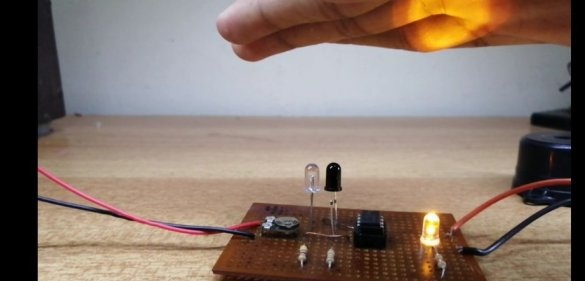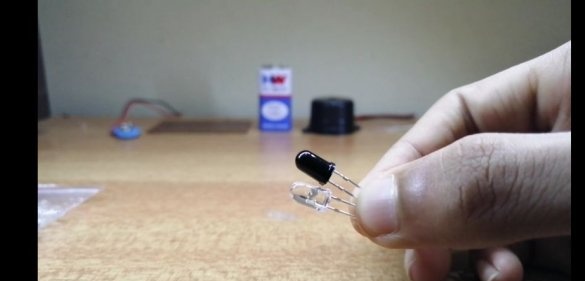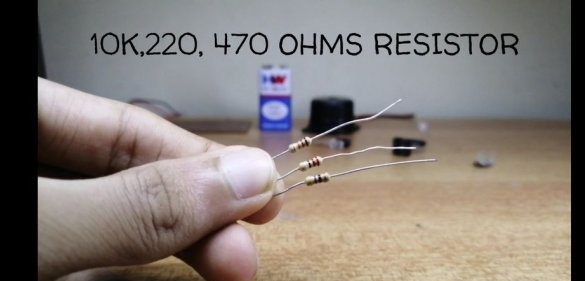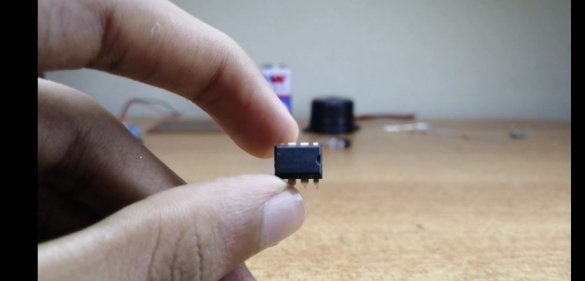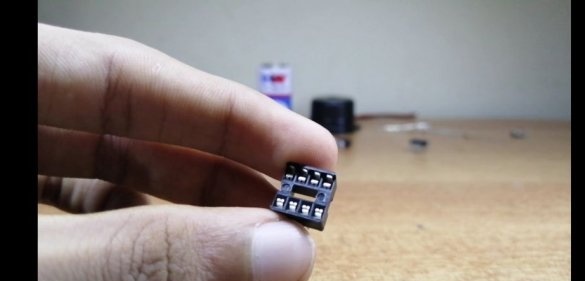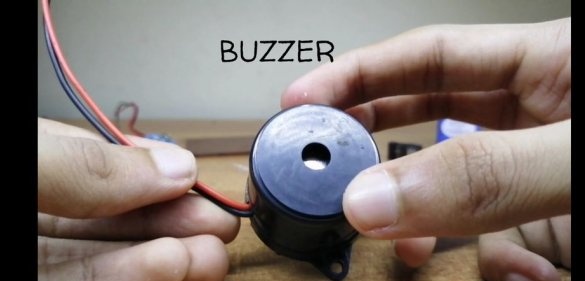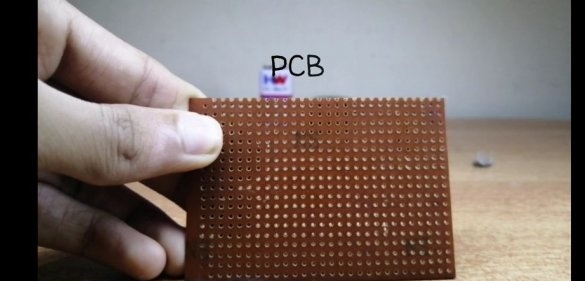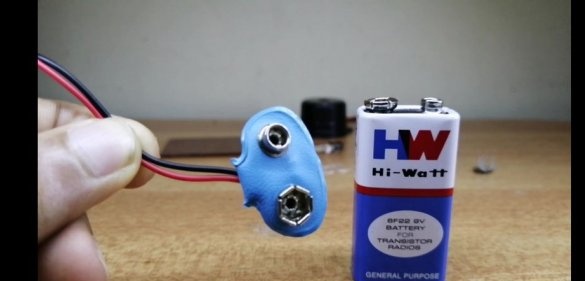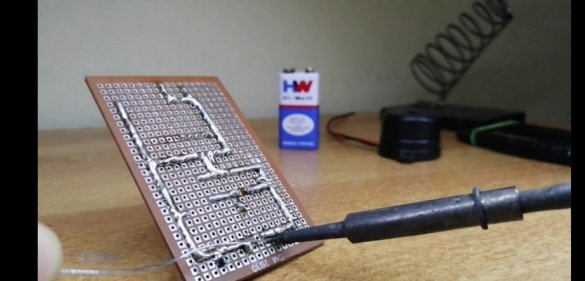Proximity sensors are capacitive, ultrasonic, optical. The author of Instrictables nicknamed Electro maker came up with a simple optical proximity sensor. It is inconvenient only in that the current through the infrared LED is not modulated in any way, and the photodiode, accordingly, also responds to continuous radiation and requires screening from other light sources (for example, a tube). The device diagram is shown below:
The wizard selects the components for homemade. Infrared LED and Photodiode:
Permanent Resistors:
Trimmer Resistor:
Operational amplifier LM358:
Visible LED:
Chip panel (optional):
Instead of an LED, you can connect a tweeter with a built-in generator, then the corresponding resistor becomes unnecessary:
A tweeter without a built-in generator is also suitable if you assemble an external sound frequency generator do it yourself. There is enough space on such a perfboard type board:
If you have bypassed several Fix Prices, and in all the perpetual motion machines have ended, you will have to use a simpler power source:
After installing the components on the board, the master connects them according to the scheme by soldering:
The photodiode and both LEDs, as well as the battery (or power supply), must be connected in the polarity indicated on the diagram, the microcircuit should be correctly oriented. The developer came across a transparent infrared LED and a black photodiode, but it happens and vice versa. To determine which of them is what, a battery, a resistor and any phone with a camera will help.
A photodiode and a 10 kΩ resistor form a voltage divider. When the photodiode is illuminated with infrared rays, reflected, for example, by hand, the voltage at the point of connection of the operational amplifier to the divider increases. The op-amp is turned on in such a way that it works as a comparator. It compares the voltage coming from the divider with the voltage coming from the movable contact of the tuning resistor. Thus, it is possible to adjust the threshold of the sensor, on the one hand, eliminating false alarms, and on the other, providing reliable detection of proximity.
By setting the threshold, the wizard checks the operation of the sensor:
For clarity, there is no tube protecting the photodiode from side illumination; without it, the circuit only works correctly in dim ambient light.
A small homework: what will happen if you swap the photodiode and resistor in the divider, and at the same time swap the inputs of the operational amplifier?

